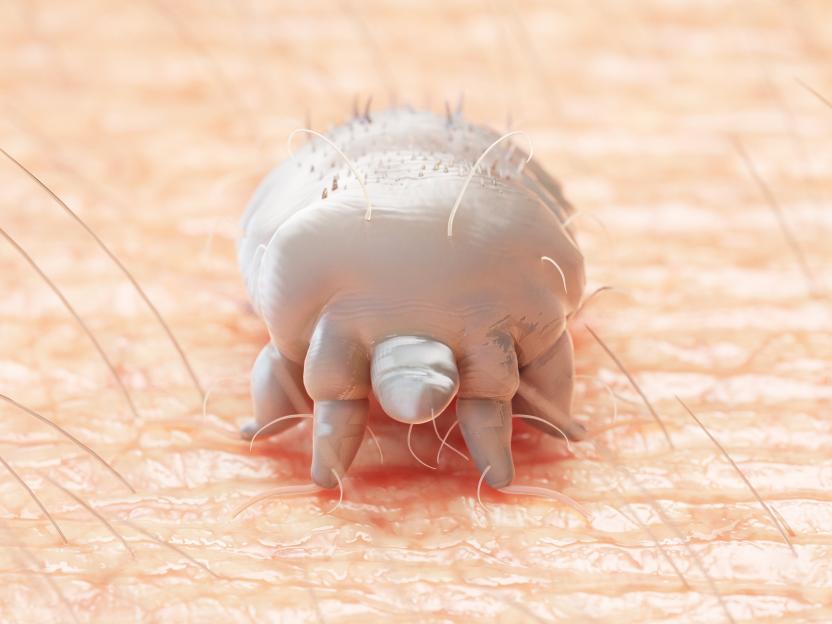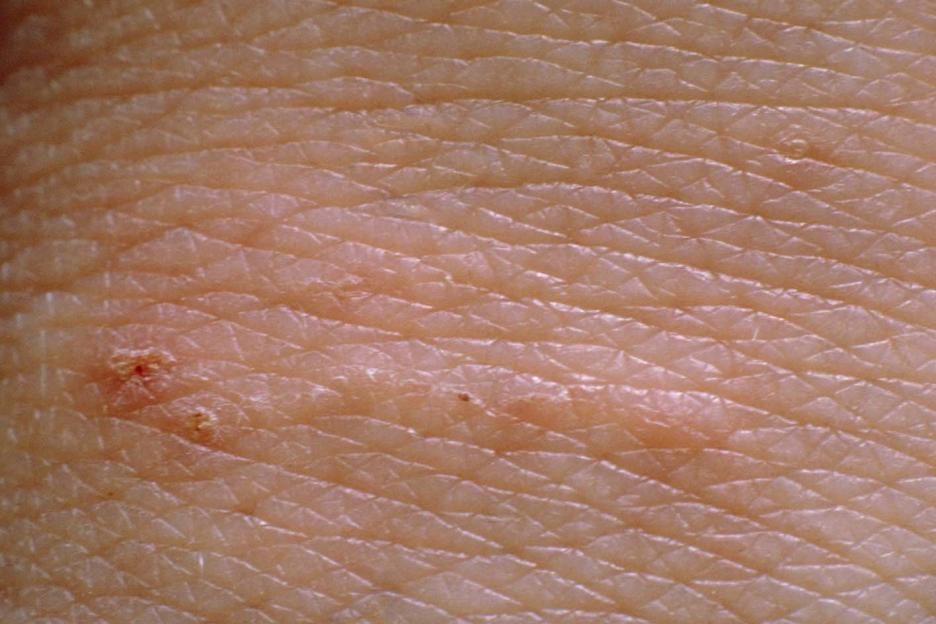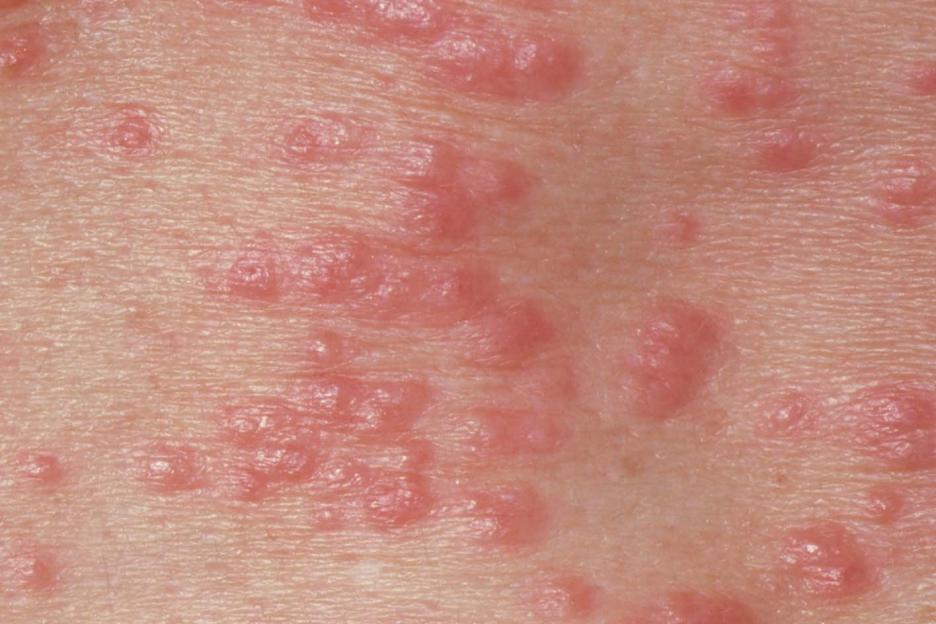A COLLEGE in Devon has been struck by an outbreak of a nightmarishly itchy Victorian-era disease – as the UK faces a spike in cases.
An email sent to parents and guardians warned the ultra-contagious mite had infiltrated the student body, with seven confirmed cases so far.
 Scabies mites burrow into the skin to lay eggs, which causes maddening itchingCredit: Getty
Scabies mites burrow into the skin to lay eggs, which causes maddening itchingCredit: Getty
“We have been notified of seven confirmed cases of scabies amongst our student community,” the email sent by South Devon College in Paignton – seen by DevonLive – said.
“These cases have been diagnosed by a professional”.
is an intensely itchy rash caused by tiny mites burrowing into the skin and laying eggs.
The crusty and flaky looking rash often affects the elbows, knees, feet and hands, appearing on the skin between the fingers and on the wrists.
But can spread across the whole body, to the armpits, waist, groin and bum.
According to the UK Health Security Agency (UKHSA): “When a person has symptoms, they may last for weeks or months, can be hard to recognise and are often mistakenly attributed to other skin conditions, leading to avoidable transmission.
“Scabies is most often transmitted by skin-to-skin contact.
“Itching may be severe, particularly at night and scratching may lead to secondary bacterial infection and its complications.”
The infection is often associated with the Victorian era, but recent reports suggest scabies could once again be on the rise.
London in particular saw an increase in cases at the end of last year, as did the North of England , with outbreaks in care homes, nursing homes and university accommodation.
Meanwhile, a .
Dr Donald Grant, and Senior Clinical Advisor at The Independent Pharmacy, told Women’s Health last month: “While there is no definitive reason behind the rise in scabies cases, a few factors could be increasing transmission rates.
“This time of year is ideal for scabies to quickly spread throughout communities, with children returning to school and university kicking off, meaning close contact in shared spaces is common, further heightening the risk of spreading this incredibly contagious condition.’
“Additionally, scabies is constantly mistaken for other conditions, with the most prevalent being or allergic reactions.
What does a scabies rash look like?
Scabies is caused by mites.
These are tiny insects called Sarcoptes scabiei var hominis.
They are parasites, meaning they live off their hosts – in this case, humans.
They are invisible to the naked eye, although females are bigger than males, at around 0.4 mm x 0.3 mm compared to 0.2 mm x 0.15 mm.
It is the female which tunnels into the skin and lays eggs.
A rash may look red, making it more difficult to see on darker skin.
But you should still be able to , which occur when tiny mites lay eggs in the skin.
The rash, which often starts between the fingers but can spread anywhere on the body, can then turn into tiny red or dark spots.
It is most common between the fingers, around the wrists, under the arms, and around the waist, groin and bottom.
It does not usually develop on the head, but in elderly people or those with low immune systems, it can appear on the face, scalp and neck, as well as on their palms and the soles of their feet.
A rash is the most obvious sign of scabies, and usually appears soon after the begins.
As the mites burrow into the skin, this can cause tunnels to appear on the surface of the skin.
These can be fine, dark or silvery lines of between two to 10mm long.
Scratching can also exacerbate the rash and damage the skin.
This can cause the skin to be .
“This means people can go weeks without proper treatment, increasing the likelihood of increased spread or reinfection in busy households.”
In April 2025, the UKHSA added oral ivermectin to its licensed treatment options.
It urged health professionals to treat cases immediately without waiting for organised “mass treatment” campaigns.
“This is to minimise their symptoms, reduce risk of complications and reduce risk of further onward transmission,” the health watchdog said.
There’s a misconception that scabies has to do with poor hygiene, but anyone can get it.
 Tiny mites lay eggs in the skin, leaving lines with a dot at one endCredit: NHS
Tiny mites lay eggs in the skin, leaving lines with a dot at one endCredit: NHS
 The rash may spread and turn into tiny spotsCredit: NHS
The rash may spread and turn into tiny spotsCredit: NHS
It isn’t usually serious, but it does need to be treated – especially because it’s so transmissible.
It can take up to eight weeks after infection for the rash to appear.
You should speak to a pharmacist if you think you have the condition.
Everyone in your home will need to be treated at the same time, even if they do not have symptoms.
Anyone you’ve had sexual contact with in the past eight weeks should also be treated.
But children under two should be seen by a GP.
How to treat scabies
If you or someone in your family has scabies:
- Wash all bedding and clothing in the house at 60C or higher, and if possible in a hot dryer, on the first day of treatment
- Put clothing that cannot be washed in a sealed bag for at least three days until the mites die
- Do not have sex or close physical contact until you have completed the full course of treatment
- Do not share bedding, clothing or towels with someone with scabies
A pharmacist will be able to give you a cream or lotion that you apply over your whole body, including your scalp and face.
You’ll need to repeat the treatment seven days later.
Everyone in your home needs to be treated at the same time, even if they do not have symptoms.
But do not use pharmacy treatments on children under two years old, they will need to see a GP.
Adults and children aged five years or over can go back to work or school as soon as they have started treatment.
It’s important to avoid close contact with other people for the first 24 hours.
Children under five years old can go back to nursery or pre-school 24 hours after the first treatment.
Although the treatment kills the scabies mites quickly, the itching can carry on for a few weeks.
See a GP if:
- Your child is under two years old and has symptoms of scabies or someone else in your household has scabies
- You have scabies and think your skin may be infected or you have another skin condition, such as eczema
- You have a crusted, flaky rash on your elbows, knees, hands or feet
- You’ve used pharmacy treatment for scabies and your skin is still itching two to four weeks after treatment has finished
Source: NHS






